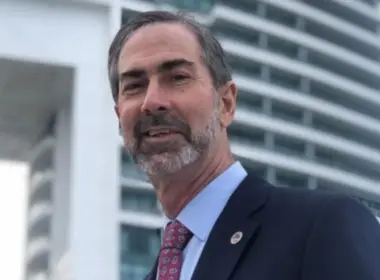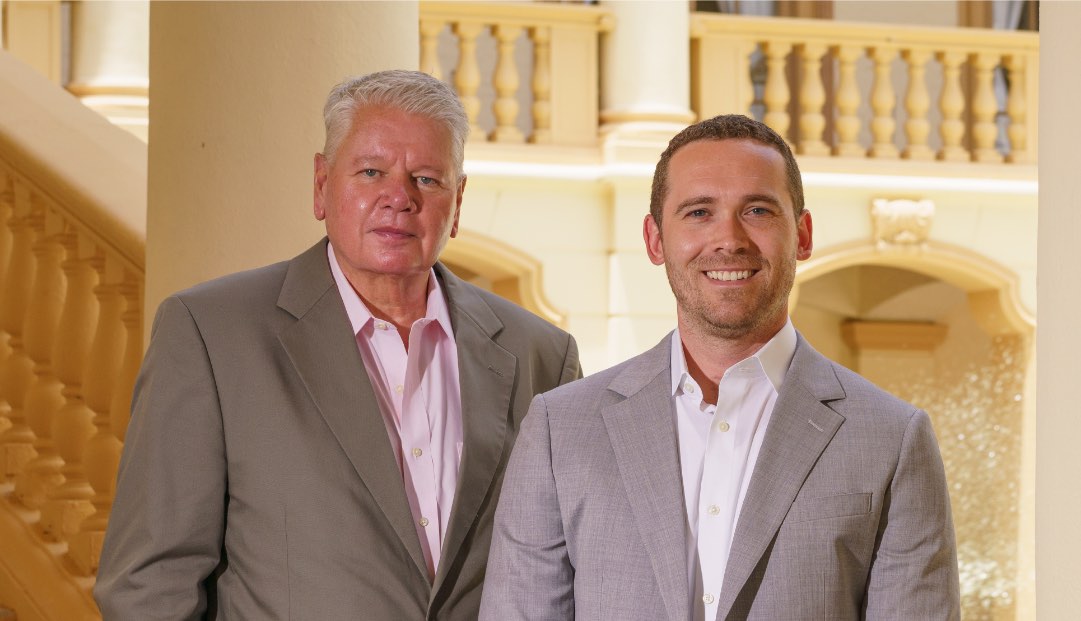The World Strategic Forum, presented by the International Economic Forum of the Americas (IEFA), is an annual two-day event that explores major governance challenges in the current global economy. The Forum provides a platform for business leaders to meet and discuss a variety of topics, including technology innovations, financial markets, economic development, ESG, and supply chain issues, amongst others. Speakers at this year’s event, which ran from Oct. 31 to Nov. 1, included representatives from World Trade Center Miami, Smart Cities Americas, PortMiami, Port Everglades, Miami International Airport, Enterprise Florida, Miami-Dade College, and Florida Realtors. Also participating were Miami Mayor Francis Suarez, Miami-Dade County Mayor Danielle Levine-Cava, and C-level executives across a diverse range of industries. We have curated the best questions and answers from three of the panels we found most intriguing. For more information about the World Strategic Forum and a full list of speakers, go to events.forum-americas.org. Full-length videos of all the panels from this year’s event are available on the IEFA’s YouTube channel.

Crypto & New Tech
This Q&A panel session featured experts in cryptocurrency and blockchain technology. Moderated by Mark Ciccarelli, First Vice-President at Morgan Stanley, the panel was comprised of Jack Abraham, founder and managing partner of Atomic; Jim Esposito, COO of MoonPay; and Peter Smith, CEO of Blockchain.com.





Jim Esposito: It’s a really tough environment right now. I don’t know that I’ve ever seen in my life the convergence of such significant macro conditions all at once: high inflation, supply chain challenges, global conflict, central banks adjusting rates at a rapid pace. It’s really sort of breathtaking to see all these things converging all at once.
Peter Smith: I don’t really count a crypto company as being serious until it’s survived two cycles, because crypto is very violent in both directions, and they can both kill you as an operating entrepreneur. Being an investor in crypto is actually kind of easy, but being an operator or entrepreneur in crypto is really hard. How do you keep up with these swings? I think navigating through that across multiple cycles is a testament to how robust your business is. Really practical people have a habit of over-scaling in their second cycle and under-scaling in their first. That’s a hard balance to get right…. There’s also not a lot of particularly great risk management in crypto. People are just not used to a world in which an asset class moves up and down by 80 percent in four months.
Jim Esposito: I think regulation is not only inevitable, it’s important and it’s needed. It’s the right thing to protect customers. It’s also important to flush out bad actors. On top of that, I’d like to see more clarity and guidance. It has become quite an expensive problem, where you’ve got to spend money on internal and external counsel. I think concise clarity from regulators, whether that’s the CFTC (Commodity Futures Trading Commission) or the SEC, etc., would be welcomed. The industry has been asking for it.
Peter Smith: We are definitely not short on regulation in the crypto space. The challenge in crypto right now is that everyone is your regulator because no one is exactly sure who your regulator is. It’s actually a lot better in Europe and Asia. In the U.S., it’s just kind of a general state of confusion…. The other thing would be consistency. We would like to follow the rules, but we would also like everyone else to follow the rules, because otherwise we’re at a business disadvantage. I do think it’s getting a lot better. We have full-time public policy teams in D.C. as well as Brussels and Singapore, and the conversations have become much more constructive and much more action-oriented, particularly in the wake of the major meltdowns of the last year. I think regulators are very concerned with actually getting something done now, which is going to be short-term painful but long-term productive.
Jack Abraham: We’ve done influencer type marketing, and it can be helpful. One company that we started was called hims & hers, where we worked with Jennifer Lopez. She’s one of the most popular celebrities out there, has one of the biggest followings in the world. It can be good for very broad products that you want to get to the masses. The thing that people don’t realize about crypto is it’s actually a much narrower audience that you need to reach to really get things to take off, which is why events and conferences work so well. It’s in-person things. It’s spreading the word. And then it’s a lot of word of mouth that spreads from that. If I were to say there are influencers in crypto, there are some YouTube channels, actually, where people have huge followings. That’s the way the word might spread further, but it’s not the traditional influencers and celebrities that you would think.
Jim Esposito: I think education is really important: helping folks understand what the power of crypto is, what the power of Web3 is, what change that’s going to have on the macro picture in society, how that’s going to empower consumers. I think those kinds of fundamental elements are really critical. We need to see more of that in this space as it continues to legitimize and move towards the mainstream and a lot less of the fancy names and faces.
Peter Smith: We don’t really do marketing. We’re very focused on building products that organically acquire users, and that’s where we’ve had the whole strength of our business, in these almost zero-cost funnels that acquire customers organically and through SEO and our data and media properties. Over time, we’ve done a little bit more brand marketing. Most of that stuff is oriented around other brands that we really admire or trust. We usually want to be identified with other institutions rather than individual people. Honestly, the thing that I get most excited about is our support and education center, which is one of the most trafficked sites in crypto and really helps teach people about crypto and even tells them about other companies’ products.
America’s Emerging Technology Hub
This Q&A panel session featured leaders in the technology sector. Moderated by Natalia Martinez-Kalinina, founder and principal of NMK Group, the panel was comprised of Bernardo Scheinkman, CEO of Smart Cities Americas; John Wensveen, CIO of Nova Southeastern University (NSU) and executive director of the NSU Broward Center of Innovation; and Michelle Abbs, founder and CEO of Web3 Equity.





Michelle Abbs: Around the early 2000s, you saw Manny Medina of Medina Capital really double down on data and technology, and he constructed an entire data center that you still see as you drive over the highways in Downtown Miami. Around that same time, Dr. Maurice Ferré really doubled down on technology and pharmaceuticals with Mako Pharmaceuticals. What I think happened is after both of those companies in the early 2000s saw a meteoric rise they then gave birth, through their IPOs and acquisitions, to various other technology leaders and companies.
Michelle Abbs: It wasn’t until COVID opened the doors that we started seeing more headquarters in “the cloud,” where talent was then choosing where they wanted to live instead of where that business was located, where they felt the happiest and had the best work-life balance. We started then seeing different pockets of talent come to Miami…. There are two camps of them that I’ve observed: ones that have worked really hard to integrate into the local ecosystem – they’re hiring locally and really seeking out those local partnerships – and then there are groups who have come and they’ve said, “This just happens to be where we are. We’re not necessarily going to integrate.” I think it will be interesting to see which of those strategies bodes well in the future. My bet is on the collaborative approach because I think there is something very important in the talent pool and in the lived experience of a place like Miami that folks who are simply importing talent are missing out on.
Bernardo Scheinkman: I’m an optimist about the future here. What we need to do now is to give more support in terms of mobility. We need to have public transportation. The way that the city here was built was for cars, and you need to change that. We need to invest more, we need to use technology for transportation, we need to use technology to build differently. We need to work together to bring mass transportation here.
John Wensveen: Leading universities all over the world have been very good at commercializing their research because they invest into the infrastructure and the network and the relevant resources to make that happen. South Florida has really been at the bottom of that list for a number of years…. The one thing we’re still missing here is the influence of federal government, where they actually create their own incubators and accelerators that contribute to that research. We have to do a better job of convincing the powers that be that South Florida is truly on fire. We are number one in terms of startups, but we are also currently at about number 38 out of 40 cities in terms of our ability to scale, meaning that we don’t have enough talent to be able to get to the next level…. What we have to do is create pathways for researchers so they’re not thinking as an academic but more as a businessperson, an entrepreneur, an innovator, or a technologist.
Bernardo Scheinkman: We have the public sector giving support and, besides that, we have the private sector bringing in developing technology. Combined, we can create more than 20,000 green jobs in the next three to four years. We could generate $40 billion in investments in the next three years. With this kind of investment, we can grow in terms of “good” technology – technology that protects people, not controls them… [But] we need to bring the citizens in for the decision-making process. We need to go to meetings, we need to discuss things. In this way, we will grow better and faster.
John Wensveen: One of the areas that I think we have to do a much better job in is how we serve underserved communities. When you see Ferraris and Lamborghinis cruising down the beach, you think, “Oh, it’s a very wealthy environment.” It is, but it’s also important to note that much of the wealth that you see was earned in other places and then spent here in South Florida, and therefore we have a huge population that often is not recognized…. So, how do we improve upon that? Number one, we have to know where the gap areas are. Industry has to become aware of where the gap areas are and invest into those communities so that everybody rises to that level of economic prosperity.
Taking Action for A Resilient Global Supply Chain Chain
This Q&A panel session featured experts in global trade. Moderated by Julian Salguero, Partner at McKinsey & Company, the panel was comprised of Alice Ancona, Senior Vice President and COO of World Trade Center Miami; Laura DiBella, Deputy Secretary of Commerce of Enterprise Florida; Wouter Witvoet, founder and CEO of EV Technology Group; Eric Olafson, Director of Global Trade & Business Development at PortMiami; and the Rt. Hon. Femi Gbajabiamila, Speaker of the House of Representatives of the Federal Republic of Nigeria.






Eric Olafson: Yes. We have seen the supply chain not end, just change. One of the major changes that we are seeing here in Miami is nearshoring. Latin America is now coming of age, and so a lot of furniture and clothing that was made in Asia is now being made in Colombia and Mexico. The prices for labor now in Latin America are less than in China. Take away the transportation costs, and we have a whole new system. We see a supply chain that is changing and helping the gateway to the Americas.
Alice Ancona: Suddenly, the public sector discovered the private sector. It’s because of the supply chain challenges in Florida; we had extensive public-private partnerships. So we benefited from that beforehand, which is why we saw our airports and our seaports continue to stay open. But in many parts of the world, that didn’t happen. The infrastructure and the investment weren’t there. The private and public sectors were not coming to the table earlier. It shouldn’t take a catastrophic event or moral standstill for everyone to realize that you should be speaking with each other. And I think as COVID becomes further in the back mirror, we’re going to forget that we have supply chain challenges and that supply chains are fragile. They will remain that way because of the interdependence that we have with other countries and other parts of the world.
Laura Dibella: Florida stands to gain so much both domestically and internationally. We are already seeing a shift in the trade lanes. 49 percent of shipments are coming into the west coast ports and 51 percent are coming to the east and Gulf Coast ports. Essentially, the bottleneck has shifted from the west coast to the east, and the ports that were primarily benefiting from it, in a very concentrated aspect, were Houston, Savannah, and New York. Now, they’re extremely congested. We sit right at the nexus of much of that activity… We’re in a very flexible period where options are being considered and Florida is seen as a very attractive option because of all that’s happening around us and that primary shift from the west to the east. And where investments are concerned, we have $2.7 million coming into Florida every hour.
Eric Olafson: By partnering with colleges for internships. Three of the cargo development staff that work with me started as interns. Now they are our most productive employees at the executive level at PortMiami. It’s about getting them into your office and sponsoring those internships because internships turn into jobs. We wear a white hat here in Miami because, at the port, we produce jobs. Bring students into the community and then hire them.
Alice Ancona: It’s a fallacy to think that there are not going to be any more disruptions. There will always be disruptions. Preparing for those disruptions is what we need to continue to do. We move forward – and it’s a great thing to do – but we can’t forget that disruptions always happen. If our supply chains are not resilient, if we don’t ensure that we have the right infrastructure and policies, we are doomed to repeat the same mistakes. Diversifying whom we trade with, learning and meeting new trade partners, and then helping each other are all part of that push towards regionalism. It’s not just investing inwardly, it is investing in others and investing in our supply chain.












